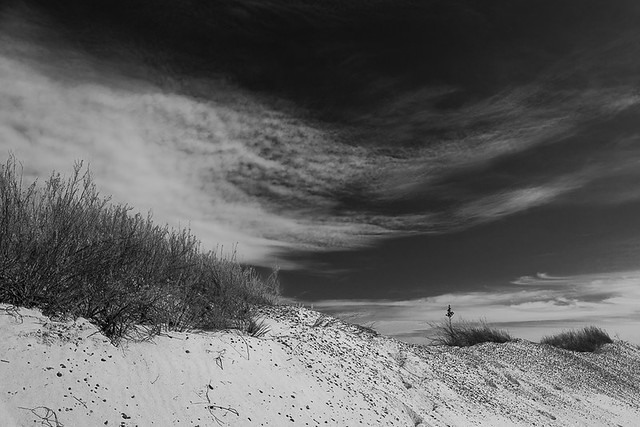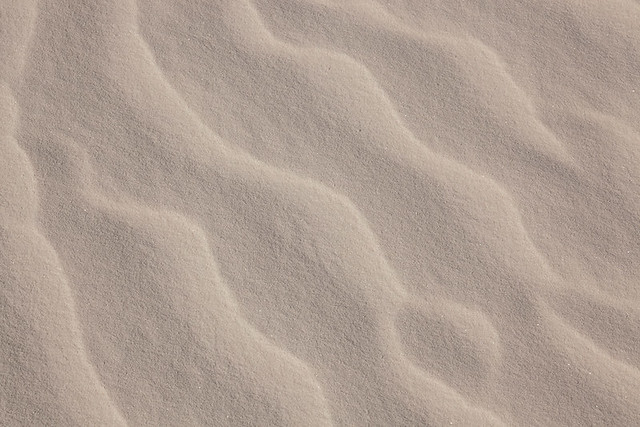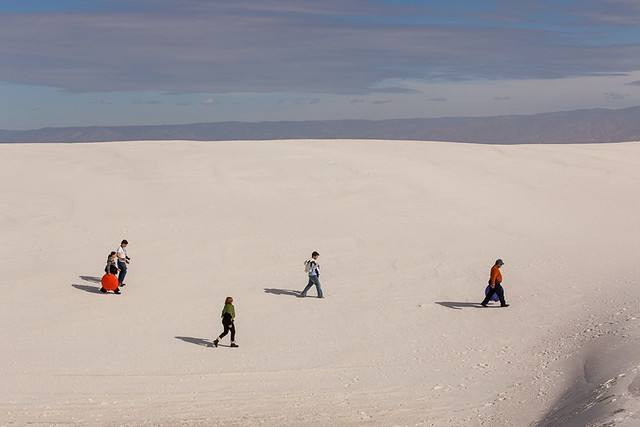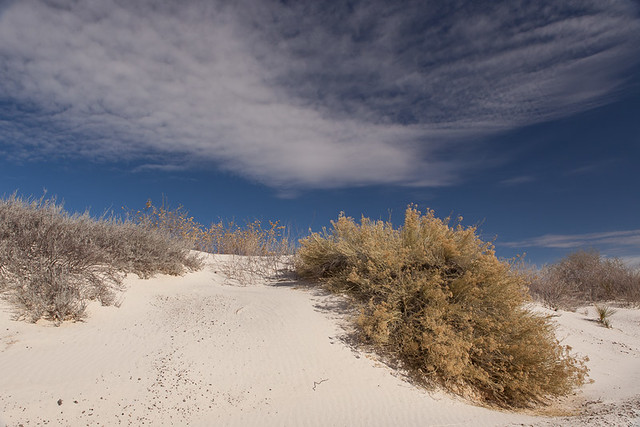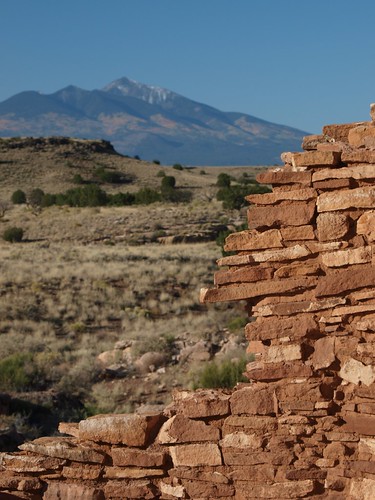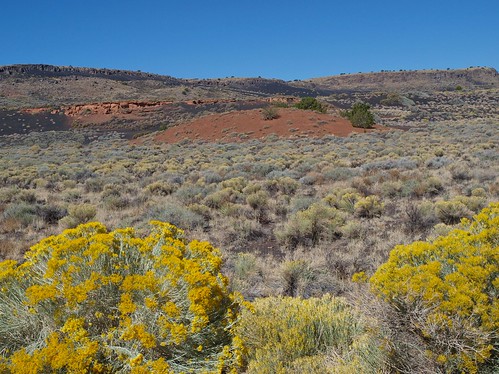White Sands National Monument in southern New Mexico is a desert within a desert.
The park is surrounded by the Chihuahuan Desert – a desert of low scrub plants. This desert of white sand dunes has even less vegetation than the Chihuahuan Desert.
Sherpa and I stopped at White Sands on our cross country trip from the Midwest to Tucson. Since I had a limited amount of time for photographs, I attempted to capture the essence of the park in a few select photographs.
The above landscape photo shows a progression of dunes, each topped with low grasses and yucca. The dunes are spotted with plants that thrive in gypsum — the white sand is pure gypsum. Gyp moonpad and gyp nama are common.
This photo of the arch of a crescent shaped dune is a small part of the larger desert landscape.
This kind of landscape photograph is often called an intimate landscape, and is a technique pioneered by Eliot Porter. Typically there is little emphasis on the horizon, the lighting, or a long shot of a vista, but instead the focus is on pattern, texture and composition.
Intimate landscapes often have an abstract feel.
The ripples of sand drifts offered plenty of opportunity for a close up photo.
The texture of the fine sand is nearly visible, the texture of sugar. This isn’t a typical macro-photograph, but it does give a good indication of the movement paths of wind blown sand.
A portrait in a landscape, or an unexpected detail in a landscape.
When I saw this photographer setting up his equipment for a portrait, I had to get a shot even though they were far away. It gives a different perspective of White Sands – the grasses in the foregorund, the gently rolling sand hills, and then the tiny figures on the horizon – a photographer adjusting his camera on a tripod, and his posing subject.
White Sands National Monument attracts a fair number of sledders.
The gift shop at the park headquarters even sells the round discs for sledding. So it seemed appropriate, as part of capturing the park’s overall feel, that I include a photograph of the visitors who came to the desert for a sled ride.
And a final photograph, a bit of the hardy vegetation that grows in one of the more hostile climates in the world.
Not many plants thrive with little rainfall, constant wind and creeping sands, drastic changes in temperatures of day and night, scorching sun and intense heat in the summer, and a soil that has minimal nutrients. The rabbitbrush and dune grasses are highly adapted plants that live where few plants can.
